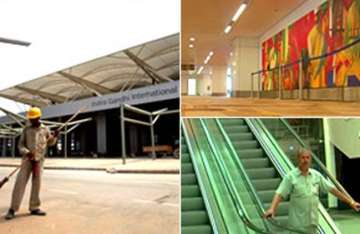New Delhi- The sophisticated air traffic management system at the IGI Airport, which was operationalised in March, crashed on Wednesday evening disrupting flight movements for almost 30 minutes. Incoming and outgoing flights were disrupted between 1750 hours and 1820 hours as the Autotrac-III system crashed, resulting in the air traffic control (ATC) screens going blank, airport sources said. However, the ATC officials quickly switched over to the earlier system -- Autotrac-II -- to restore air traffic, the sources said.
This is the third time this year that the air traffic management system at the airport has collapsed. The system had crashed twice in January when US company Raytheon's Autotrac-III system was being tested for installation. The sources said no incoming flight was diverted to any other airport but they were made to hover over the Delhi airspace till the Autotrac-II system was made operational. An Airports Authority of India spokesperson said the two Autotrac systems were working simultaneously. "There were some problems in Autotrac-III for a few minutes. There was no disruption to any flight in any way".
The ATC system crash occured on a day when the airport's plush new Terminal-3 was made operational with some flights operating out of there. A software glitch was suspected to be the prime cause for the crash, the sources said, adding that the Autotrac-III system had stopped transmitting inputs to the radar consoles, which show the traffic in the airspace controlled by ATC tower and give vital information like aircraft speed, height and call-signs. In the past two such instances on January 14 and 26 this year, the ATC had to switch over to the 'manual procedure' to maintain vertical and horizontal separation between aircraft and to enable them to land or take-off. At that time, the incident had happened during peak hour traffic and the system had taken almost one hour to be rectified, leading to severe congestion over Delhi airspace. Aviation sources said that systems like Autotrac-II or III were not the only ones maintaining separation between two aircraft.
Most commercial airliners now fly with their own on board traffic collision avoidance systems (TCAS), which provide warnings about presence of another plane in the vicinity, they said, adding that it had been made mandatory to install TCAS on all aircraft operating in India. PTI
Latest India News
